
Section 10. Science and innovations
10.1. Innovations in 2022
Water Saving Technologies
Indrica developed a new digital solution for end-to-end management of agricultural irrigation infrastructures and networks. The multinational company, with an extensive track record in the digital transformation of drinking water and sanitation infrastructures, is now transferring its know-how to the agricultural sector with the GoAigua Agro Twin module, which centralizes the main elements of agricultural irrigation management. The use of data-integrated algorithm facilitates real-time control and monitoring of assets, improves decision-making, optimizes irrigation schedules, and provides early detection of leaks, fraud, and consumption that exceeds the established allocations. Along with comprehensive work order management, GoAigua Agro Twin boosts operational results and records interactions with irrigation associations through an online office and mobile application. This technology can also program irrigation, pumping and fertilizer systems from the control center. It can also analyze soil water status and optimize crop water consumption; manage the network of meters, devices, communications, asset energy consumption and set up customized alarms that can be configured by the user. It also facilitates real-time data visualization, including the creation of dashboards and management indicators, and provides advanced water efficiency management, both in the distribution network and at the supply points.
By recirculating and treating shower water in real time, the innovative Eco Loop hower system proposed by the Danish Flow Loop reduces water consumption by up to 80% and energy usage by 70%. This is done by recycling, cleaning and disinfecting the personal shower water in a closed loop while showering. The system also has a backwash cycle that is activated after each use. It can be integrated into most existing bathroom systems.
Water Treatment and Desalination
Researchers led by the MIT and Shanghai Jiao Tong University demonstrated solar-powered multi-stage membrane distillation. In test devices, the team says that this technique can achieve over 80% efficiency in converting solar energy to water vapor, even when the starting water had salt concentrations up to 20% by weight. No salt crystals were detected in the device after a week of operation. Importantly, the system is made of everyday materials, so it should be scalable and inexpensive. The team calculates that a system with a collecting area of just 1 m2 could provide enough drinking water for a family’s daily needs.
MIT researchers have developed a portable desalination unit weighing less than 10 kilograms. The technology is packaged into a user-friendly device that runs with the push of one button. This device utilizes electrical power to remove particles from drinking water. The unit can be deployed in remote and severely resource-limited areas, such as communities on small islands or aboard seafaring cargo ships.
NanoseenX nanomembranes for water desalination and filtration are produced by a team of engineers and researchers from the startup Nanoseen (Poland) from mixed matrices created by combining many types of nanomaterials in different weight ranges (Mix Matrix Solution). Depending on the salinity of the water and/or the level of its contamination, from 2 to 20 nanomembranes are used, which are arranged in cascades. Each membrane has been designed to remove different sizes of contaminants, from larger physical objects, to pesticides, heavy metals and eventually viruses and nanoplastics. The technology is environmentally friendly with zero CO2 emissions. The nanomembranes are biodegradable.
The Canadian Oneka developed wave-powered floating desalination buoys. This desalination device is made from recycled plastic bottles and creates up to 53,000 liters of fresh water a day. Buoys are anchored to the sea floor anywhere with an average wave height of more than 1 m; they absorb energy from passing waves, and convert it into mechanical pumping forces that draw in seawater and push around a quarter of it through a reverse-osmosis desalination system. The remaining three quarters is mixed back in with the briny discharge from the desalination process and released back into the sea. It's only 30% saltier than the water around it. Within about 3 m of each device, there's already no measurable increase in water salinity over the baseline. Iceberg-class units are designed to generate between 30-50 m3 of water per day – enough for the daily needs of between 100-1,500 people. Onboard sensors, powered by small solar panels, continuously test the water that's produced, ensuring it meets relevant standards.
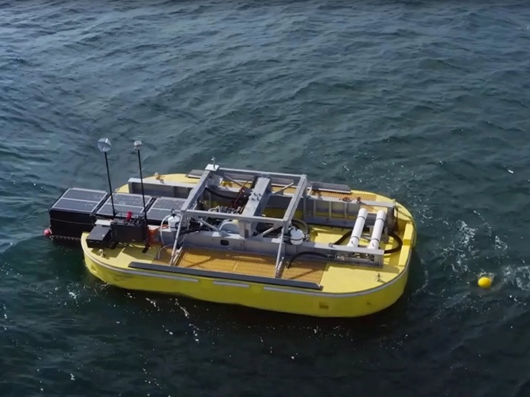
Water from Air
The team at the University of Texas at Austin (USA) developed a particularly “salt-friendly” hydrogel. This gel gains the ability to absorb and retain water when combined with a hygroscopic salt. Using hydrogel, almost six liters of pure water per kilo of material can be extracted from air in 24 hours with only 30% relative humidity. The basis for the new hydrogel was a polymer constructed from zwitterionic molecules. Polyzwitterions carry both positive and negative charged functional groups, which helped the polymer to become more responsive to the salt in this case. Initially, the molecular strands in the polymer were tightly intermingled — but, when the researchers added the lithium chloride salt, the strands relaxed and a porous, spongy hydrogel was formed. Polyzwitterionic hydrogels could play a fundamental role in the future for recovering atmospheric water in arid, drought-stricken regions.
Mini atmospheric water generator Mobile Box developed by the Watergen (Israel) provides up to 25 liters of fresh drinking water generated from the air. Once the Mobile Box is plug into a 12- or 220-V vehicle outlet, the unit sucks in air through a fan, runs it through a filtration system on the way to the patented heat exchanger that extracts water out through condensation, processes it through a multi-level filtration system that includes UV light, and stores it in a reservoir. Users can pour the water through the tap or remove the entire reservoir. Another “On Board” version makes up to 50 liters of drinking water per day.
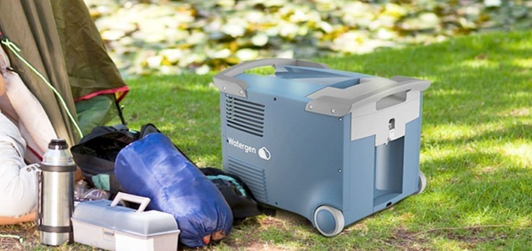
Innovations in Agriculture
Finnish manufacturer Tracegrow developed a new fertilizer made from spent batteries. The product, known as ZM-Grow, is a sulphate-based concentrate, containing 60g/liter of zinc, 67g/liter of manganese and 75g/liter of sulphur. The fertilizer is made by crushing, treating and leaching batteries into a mass that is then filtered, purified and finally neutralized to measure around four on the pH scale. ZM-Grow was tested in a variety of climates, is listed as being suitable for most plants, and is also certified for organic farming.
Efficient production technique for a novel “green” fertilizer was proposed by the Deutsches Elektronen-Synchrotron DESY (Germany), Ruder Boskovic Institute (IRB, Croatia) and Lehigh University (USA). An international team used PETRA III to optimize the production method that is an adaptation of an ancient technique: by milling two common ingredients, urea and gypsum, the scientists produce a new solid compound that slowly releases two chemical elements critical to soil fertilization, nitrogen, and calcium. The team used the P02.1 setup to gain insight into parameters governing the milling process, to optimize reaction conditions for preparing the target fertilizer. They found a procedure that enabled 100% conversion of the starting materials into the target fertilizer. The milling method is rapid, efficient, and clean – as is the fertilizer product, which has the potential to reduce the nitrogen pollution that fouls water systems and contributes to climate change.
Ag Leader (USA) offers nozzle-by-nozzle sprayer control (USA) - RightSpot - for consistent and effective coverage plus added flexibility for a wider speed range, greater productivity and increased accuracy. RightSpot is very precise at applying the right rate and pressure desired across varying speeds and field terrain. It means maximizing the effectiveness of their inputs with the right droplet size and coverage to give the crop what it needs while minimizing wasted product and time. With RightSpot, flow rate and pressure are controlled independently.
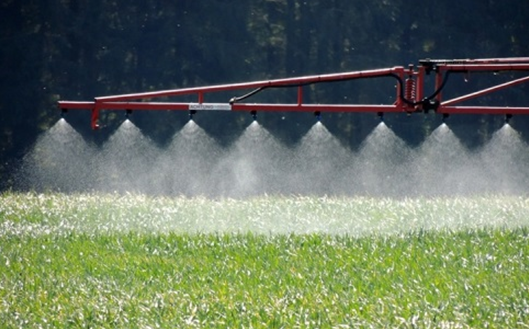
AgNext Technologies (India) introduced E-Spray, an electrostatic-based pesticide sprayer for 360° crop coverage, zero pesticide wastage, or excessive pesticide dripping. The e-spray contains an IoT device that allows users to track spraying activity in real-time, allowing a farmer to monitor the entire activity such as the movement of the spraying person with GPS location on the map, sprayed area, chemical consumption, start & end time of spraying, etc., and prevent malpractices.
The new plant-inspecting Solix robot was designed by the Canadian Solinftec. It will use onboard cameras and other sensors (along with AI-based software) to check the health of plants and assess their nutritional content, plus it will look for weeds and evidence of insect damage. When a problem is spotted, its location within the field will be noted and reported to the farmer, along with suggestions on how it should be rectified. The robot runs on lithium-ion batteries, is recharged by solar panels and does not produce additional CO2 emissions.
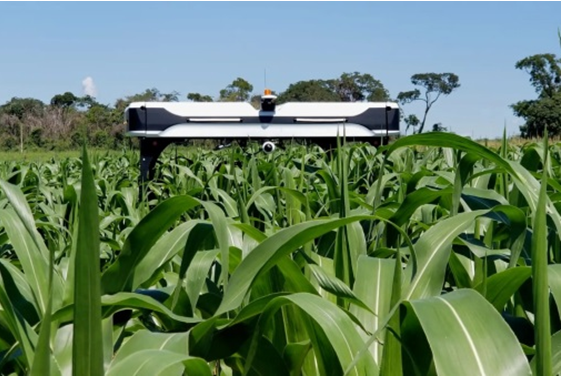
Scientists from Russia and Belarus developed a “Locust extermination machine” excluding application of chemicals. The device gets rid of locust larvae through high-voltage electric pulses with minimal energy consumption. This machine is cost-efficient, environmentally friendly and highly demanded in agriculture.
Aeroscript (Russia) developed a digital platform “Horizon” for aerial farm robots. The aerial robots monitor water, crops, soil and weeds. Images in the infrared and visual spectral range help to judge on conditions of crops. The digital platform not only coordinates flights, but also provides a number of specialized user-friendly tools. In particular, KML/KMZ files to upload flight task parameters in the system and display GIS layers of user fields. The map showing the airspace structure has a number of elements that enable more accurate and convenient coordination. All this much eases the farming.
The Altay State Agricultural University and the Moscow Timiryazev Agricultural Academy (RSAU-MTAA) (Russia) developed an automated system to monitor I&D networks. The system ensures safe operation of hydraulic facilities – reservoirs and irrigation canals. Monitoring of water level in the source or in the network of irrigation canals enables quick decision making on water distribution and safe operation of facilities. The system helping to track dynamics of water level and head stores the data on a memory card and/or transmit it through GSM-channels via GSM interface. The system operates on a solar battery and is fully autonomous.
A total fleet of 100 units of drone sprayers has been recently fulfilled by XAG (Ukraine). Totally, 59 mobile crews are formed. It is estimated that XAG's drone fleet will cultivate more than 500 thousand ha of crops. The use of drone sprayers will help farmers to save 30% of pesticides, 95% of water and 90% of fuel.
The Russian “Agronout” implements the True Fields platform for digitalization of agro-industrial enterprizes. True Fields AI-based software platform combining IT-technologies and traditional soil and agronomic expertise helps agrarians to increase crop yields by getting reliable data on soil fertility potential and subsequent accurate application of stuff to the selected zones of sustainable fertility.
Researchers of the Uzbek Institute for Polymer Chemistry and Physics developed a production technology for the “Kuprumkhit” protector. “Kuprumkhit” is applied as 0.5% solution for pre-treatment of cotton and wheat seeds to prevent diseases. It forms a polymer film that protects seeds from hazardous environmental conditions. The product is environmentally safe, biologically active and biodegradable; it is effective against pathogenic microorganisms and accelerates plant growth and enhances plant immunity.
The Institute of Microbiology of the Academy of Sciences of the Republic of Uzbekistan developed the bio-product “Azos-Uz” representing an association of active nitrogen-fixing and phytohormone-producing effective strains of bacteria of the genus Azospirillum. The bio-product is designed to increase crop yields and enhance crop resistance to diseases under conditions of saline soil; it also dissolves mineral phosphates, produces a number of B vitamins and growth-stimulating substances. “Azos-Uz” is offered for crop seed treatment. As a result, the yield increases by 5-10 kg/ha, the need for chemical nitrogen fertilizers decreases by 50%.
Combatting Desertification
The Norwegian startup Desert Control claims that it can fight desertification efficiently by spraying sand with Liquid NanoClay (LNC) and turning it into soil in 7 hours. When sprayed onto sand, this amazing invention trickles down and percolates the sand, turning it into water-retaining soil where plants can germinate and thrive. The effects of Liquid NanoClay last for about five years, after which the artificially created soil needs a top-up.
A new technology for calling precipitation from clouds is developed by the North Caucasus Federal University together with other Russian researchers and colleagues from the UAE. In the future, the technique will effectively redistribute atmospheric moisture, moving clouds 50-100 kilometers horizontally. It is based on the use of reagents that increase the lifetime of clouds and their saturation with moisture. To control the behavior of the atmospheric front, meteortrons – installations that create powerful vertical jets of warm, moist air – are used. The developed reagent, due to the condensation of water particles on it, releases heat as it rises, which increases the energy and speed of the ascending airflow. The chemical composition of the reagent includes sodium and calcium chlorides, urea. Addition of a reagent to the meteotron increases the vertical extent of the atmospheric front. This leads not only to an increase in the intensity and amount of precipitation, but also to an increase in the lifetime of clouds.
Alternative Energy
A giant “water battery” Nant de Drance capable of storing as much energy as 400,000 electric car batteries was switched on in Switzerland. The €2 billion project is located nearly 600 m beneath the Swiss Alps. The hydro battery works by using the excess energy to pump water between two separate reservoirs at different altitudes. Six pump turbines send water from the lower reservoir of Emosson to the upper reservoir of Emosson Vieux during times of overproduction. With a capacity of 25 million m3, the water battery has a power output large enough to power as many as 900,000 homes.
The Finnish Vatajankoski built a commercial sand battery for the Polar Night. This is a thermal energy storage system, effectively built around a big, insulated steel tank – around 4 m wide and 7 m high – full of plain old sand. When this sand is heated up, using a simple heat exchanger buried in the middle of it, this device is capable of storing an impressive 8 MWh of energy, at a nominal power rating of 100 kW with the sand heated to somewhere around 500-600°C. The company claims an efficiency factor up to 99%, a capability to store heat with minimal loss for months on end, and a lifespan in the decades.
Scientists from Helmholtz-Zentrum Berlin (HZB) broke the efficiency world record of tandem solar cells consisting of a silicon bottom cell and a perovskite top cell. The team used an improved perovskite compound with a modificed surface – it developed an interface modification in which charge recombination losses are largely suppressed. Furthermore, they applied special measurement methods to better understand the fundamental processes. These developments were then successfully transferred to tandem solar cells. The certifying institute European Solar Test Installation (Italy) officially confirmed the 32.5% efficiency record.
10.2. Theory of Climate Change Intensity Assessment
The analytical review of existing methods to assess climate change on various accessible research platforms of international organizations and institutions (see below) carried out by a group of researchers from Uzbekistan found that no proper approaches are available to assess the intensity of climate change.
Existing assessment methods
1. Climate change adaptation planning, research and practice platform (weADAPT);
2. Climate Change Knowledge Portal (CCKP) of the World Bank Group;
3. United Nations Framework Convention on Climate Change (UNFCCC), official country data portal on greenhouse gas emissions;
4. World Meteorological Organization. Catalogue for Climate Data;
5. Roshydromet Climate Centre;
6. The Central Asia Climate Information Platform (CACIP);
7. Portal of Knowledge for Water and Environmental Issues in Central Asia (CAWater-info).
To fill this gap, the researchers suggested the following formula to assess the intensity of climate change in a particular region (Ji):

where:
T - annual measurement of surface air temperature (or surface temperature) – seasonal average (at least for ten years t=10 years);
V - atmospheric air humidity;
R - prevailing wind direction (wind mode). Since the inflow from the west and north (North-West) occurs most of the year, it is suggested to take Rnw = 0.7 (cold season), and southwest index Rsw = 0.3 (warm season);
G – Geographic location of the region (tropical, equatorial, temperate, polar). Based on the CMIP forecast , which says that the highest intensity will be in the temperate belt and the polar belt - the following coefficients are proposed for these regions: G temperate belt = 2, G polar belt = 1.5. For the tropical and equatorial belt, the index is 1.25. This approach to estimating the geographical coefficient is related to the response of radiation reflected from clouds. Total radiation is the total influx of solar radiation to the horizontal surface of the Earth. Annual amounts of radiation influx vary from 40 kcal near the polar circle to 100 kcal in the Mediterranean region and Central Asia;
Кк – is a correlation index that takes into account the specificity of the territory (urbanized K = 2, rural area K = 1.7, forests K = 1.0, desert K = 1.5, etc.);
Кс – cyclist index, which characterizes the number of recurrences of: floods; droughts; fires; abnormal natural phenomena (downpours, tornadoes, volcanic eruptions, dust storms, etc.);
Кnr – index of reduction (loss) of natural resources, characterizes the number of lost types of resources (flora and fauna, water resources and other types of natural resources).
The authors' ownership to this method is confirmed by the copyright No.005172 issued on 28.10.2022 by the “Center for Intellectual Property” under the Ministry of Justice of the Republic of Uzbekistan.
For the Theory published on the WMO and GWP Integrated Drought Management Program portal, see.
Source: GEF Agency of IFAS
10.3. Leading Research Institutes of EECCA Countries
Belarus. Republican Unitary Enterprise “Central Research Institute for Complex Use of Water Resources” (CRICUWR)
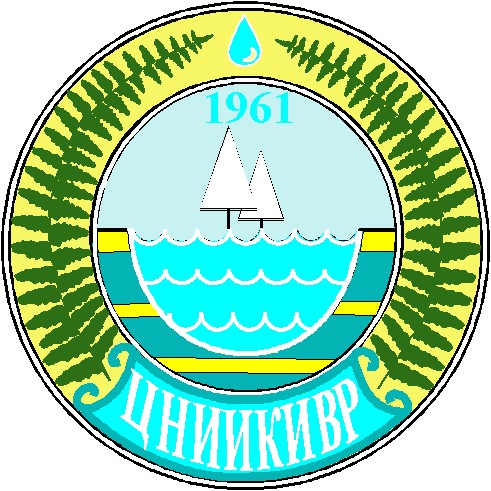 RUE CRICUWR was established in 1961 . It is a back-up organization of the Ministry of Natural Resources and Environmental Protection of the Republic of Belarus (since 1994) for development of river basin management plans, inventory of national surface water bodies, schemes and projects of water protection zones and coastal strips of waterways and reservoirs, zones of sanitary protection of surface and groundwater intakes. It performs the functions of the head organization for maintaining the State Water Cadaster (SWC), provides information services to the economic sectors offering data on water bodies, water resources, regime, quality, water use and wastewater discharge; exchanges data with neighboring states (on transboundary watercourses) and prepares information materials on water resources and their use for international organizations.
RUE CRICUWR was established in 1961 . It is a back-up organization of the Ministry of Natural Resources and Environmental Protection of the Republic of Belarus (since 1994) for development of river basin management plans, inventory of national surface water bodies, schemes and projects of water protection zones and coastal strips of waterways and reservoirs, zones of sanitary protection of surface and groundwater intakes. It performs the functions of the head organization for maintaining the State Water Cadaster (SWC), provides information services to the economic sectors offering data on water bodies, water resources, regime, quality, water use and wastewater discharge; exchanges data with neighboring states (on transboundary watercourses) and prepares information materials on water resources and their use for international organizations.
Activities in 2022
Research. The Institute developed: (1) software for rating regional environmental development in Belarus (http://ecorating.by/). The information system gives a comprehensive environmental assessment of administrative territories and large cities by group of indicators for the purposes of the public policy on sustainable development and environmental improvement, as well as for the improvement of individual environmental management instruments of international cooperation; (2) information system of the state water cadaster – an integrated web-based information system for water management; the system contains regularly updated spatial (cartographic) and attributive (thematic) data on water bodies (rivers, streams, canals, lakes, reservoirs, ponds, springs) broken down by administrative territories and basins.
RUE CRICUWR using the unmanned aerial vehicle PHANTOM 4 RTK featuring high-precision mapping: measures areas of water and other objects; determines the degree of macrophyte invasion of water bodies and calculates the invasion area; detects the degree of eutrophication of water bodies and spots of increased blooming; monitors floods; monitors HPPs (visual inspection of dams, main units and mechanisms), etc.
Events. RUE CRICUWR took part in: (1) Scientific conference “Sustainable use of natural resources and environmental protection in the context of climate change” (January 26, Minsk); (2) 28th International information and communication technology forum “TIBO-2022” (June 6-10, Minsk); (3) International exhibition of housing and communal services “Our House” and roundtable “Improving reliability of water sewerage systems. Reconstruction of wastewater treatment plants under restrictive measures” (September 21-23, Minsk); (4) 9th Regional Forum of Belarus and Russia entitled “The role of interregional cooperation in deepening integration processes within the Union State” (June 30-July 1, Grodno). As part of the Forum, a session was held under the section “Cooperation between Belarus and Russia in the context of new international climate agenda” (June 30); an exhibition, where the RUE CRICUWR demonstrated the information system and the results of regional environmental rating in Belarus, was organized; cooperation agreements were signed between the RUE CRICUWR and the Russian State Hydrometeorological University (June 30, Grodno).
The Institute’s Council of Young Scientists participated in the national youth festival “ECO style life” including the following events: international research conference “Ecology: a step into science”, discussion platform “The future of planet is in the hands of the youth”, exhibition-presentation of research projects of students and environmental capmpaign “Hero’s Tree” (April 21-22, Minsk).
Mass media. Head of the Surface Water Division, E. Gromadskaya participated in the two press conferences: (1) “Latest developments in water use and protection legislation: environmental norms and regulations, National Water Resource Management Strategy, ecological status and improvement of surface water bodies” (August 12, Press Center, “House of Press” RUE); (2) “Water resources of Belarus: use and conservation” (August 30, Sputnik Belarus multimedia press center).
Publications. For Institute publications in 2022, see
Source: RUE CRICUWR
Kyrgyzstan. Institute of Water Problems and Hydropower at the National Academy of Sciences of the Kyrgyz Republic (IVP&GE NAN KR)
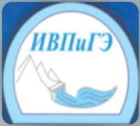 The IVP&GE NAN KR was established in 1992. The Institute’s activity is focused on fundamental research and applied technology development in the area of hydrology and hydropower. The Tien Shan Highland Research Center (TSHHRC) and the Ala-Archa Polygon for studies of hazardous hydrological processes operate at the Institute. In 2022, the IVP&GE NAN KR celebrated its 30th anniversary.
The IVP&GE NAN KR was established in 1992. The Institute’s activity is focused on fundamental research and applied technology development in the area of hydrology and hydropower. The Tien Shan Highland Research Center (TSHHRC) and the Ala-Archa Polygon for studies of hazardous hydrological processes operate at the Institute. In 2022, the IVP&GE NAN KR celebrated its 30th anniversary.
Activities in 2022
Research Based on the “Analysis of opportunities for forecasting and management of water and energy resources in the Kyrgyz Republic in the context of climate change and under anthropogenic load” program, research efforts are carried out on the following themes: (1) Assessment of river runoff in Kyrgyzstan in the context of climate change; (2) Study of hydropower potential in the basins of Issyk-kul Lake and the Chu River under conditions of climate change; (3) Development and justification of groundwater management plans for the eastern part of the Chu Valley on the base of non-stationary geo-filtration models; (4) Study of hazardous exogenic hydrogeological processes in Tien Shan; (5) Environmental and geographic characteristics of sustainable river basin development in Kyrgyzstan in the context of climate change and anthropogenic load; (6) Creation of RS-based geoinformation system for monitoring water and land in Kyrgyzstan.
Researchers of the Institute continuously monitor: (1) the status of breakthrough lakes in the Ala-Archa River valley through regular stationary measurements of the key hydrometeorological parameters. Surveys were also made near Adygene lakes and glacier, and sites for future surveys were identified (July);

(2) Kara-Batkak glacier feeding the Chon-Kyzyl-Suu River in southeastern Issyk-Kul region. Along with RS-measurements, complex expeditions are organized annually to the altitudes above 3,500 m from April to October.
As part of the RSF grant No.20-77-10057 “Diagnostics of permafrost degradation based on isotope tracers (234U/238U, ?18O+?2H, ?13C+14C)”, researchers of the Institute and the FECIAR UrB RAS’s Environmental Radiology Laboratory organized: (1) an expedition to the Ala-Archa River valley. Isotope-geochemical analysis methods of water samples help to gain insight into river flow formation and assess the components of the water balance; (2) a roundtable on “Evolution of glaciation of the Inner Tien Shan under the impact of climate change and human activity”, where the IVP&GE NAN KR and FECIAR UrB RAS signed an agreement on scientific and technical cooperation (July 26).
Capacity building. The annual summer school “Knowledge transfer and data exchange” on the program “Satellite and instrumental monitoring of water resources in Central Asia” was organized for meteorologists, hydrologists, glaciologists and ecologists of Central Asia at the TSHHRC (August 5-11, Kyzyl-Suu vilage).
Young researchers and experts of the Institute took part in: (1) the expedition from the Syr Darya River flow formation zone to the Aral Sea organized by EC IFAS (May 18-30, KR, RK, RT, RUz); (2) workshops on WEAP and LEAP models in the Syr Darya River basin (September 29-30).
Events. The IVP&GE NAN KR organized: (1) roundtable “Water and energy resources of Kyrgyzstan under climate change and anthropogenic load” (March 22); (2) International scientific and practical conference “Problems of monitoring and forecasting of water and energy resources in Central Asia in the context climate change” dedicated to the Science Day, the 30th anniversary of the IVP&GE NAN KR and the memory of D.M.Mamatkanov, Academician of NAN KR and NAN RT (November 9-11). The monograph “Water and Hydropower Resources of Kyrgyzstan in the context of Climate Change” was published.

The IVP&GE NAN KR took part in the 2nd International High-level Conference on the International Decade for Action “Water for Sustainable Development”, 2018-2028 (June 6-9); 4th Forum of scientists of the CIS member states (June 16-18, Bishkek); International scientific and practical conference on “Scientific achievements for human development” as part of the “Uzbekistan-Kyrgyzstan” academic readings (September 17-20, Navoiy, Uzbekistan).
Awards. As part of the Science Day celebrations at NAS KR, staff members of IVP&GE NAN KR were awarded the “Excellent Scientist” and the “Honored Worker of NAS KR” badges (November 10).
Media. Experts of the Institute gave interviews on: (1) water level lowering in Issyk-Kul Lake since 2011 (January 24, KR); (2) water challenges (February 19, TV KABAR; April 14, ElTR “Ilim Bilim”); (3) water-energy balance in Central Asia at the meeting at the National Institute for Strategic Research of the Kyrgyz Republic (June 24, MARAL FM); (4) status of mountain lakes in the Chu valley (July 13, BBC News Kyrgyzstan); (5) causes of glacier collapse in Zhuuku Gorge (July 14, SPUTNIK Kyrgyzstan).
Source: The IVP&GE NAN KR
Kazakhstan. Kazakh Scientific Research Institute of Water Economy (KazSRIWE)
The KazSRIWE was established in 1950 in Taraz. This is one of the leading research organizations in the area of water management, land reclamation and irrigation, watering technology and technique, agricultural water supply and pasture watering, and water economics. The Institute’s mission is to deliver research, design, and educational activity to ensure effective and sustainable development of the water sector in the context of integrated water use and water security of the country.
Activities in 2022
Research. The scientific and technical program “Technologies and technique of watering in new irrigated land and of reconstruction and modernization of existing irrigation systems” is ongoing . The program has the following tasks to solve: justify optimization of water use when applying water-saving technologies; develop a system of RS- and ground-based monitoring of water-rich territories suitable for development of irrigated agriculture in the southern region of Kazakhstan; develop principles and methods for balanced irrigation water distribution based on hydrological information and taking into account water formation in river basins; develop and optimize energy-efficient technologies for soil potential management in irrigated agro-landscapes of the Republic.
Events. The KazSRIWE hosted international conferences entitled: (1) “Climate and water resources: land reclamation and ecology” dedicated to the 70th anniversary of DAgrSc B.M.Koybakov, member of the Academy of Agricultural Sciences of Kazakhstan. The conference work was organized in 4 sections: “Impact of climate change on Eurasian water resources”, “Transboundary waters and threats to their conservation”, “Prospects of irrigated agriculture under conditions of water shortage”, and “Environmental challenges in light of growing water consumption and climate change” (February 4); (2) “Innovative and practical solutions for accelerated restoration of degraded irrigated land productivity” , sessions “The status and prospects for reclaimed land use”, “Innovative technologies of land reclamation”, “Water-saving irrigation and water supply”, and “Ecology and economics of water management” (May 20).
Publications. Proceedings of the International Scientific and Practical Conference, May 20, 2022, Taraz, 2022. – 273 pp.; Collection of scientific papers/ KazSRIWE, - Taraz, 2022. – 282 pp., Vol.1, Vol.2.
Source: KazSRIWE
Russia. Russian Research Institute for Integrated Water Management and Protection (RosNIIVKh)
 RosNIIVKh was founded in 1969. It consists of the lead institute (Yekaterinburg) and branches: Eastern (“VostokNIIVKh”, Chita), Far Eastern (“DalNIIVKh”, Vladivostok), Kamsky (“KamNIIVKh”, Perm), and Bashkir (“BashNIIVKh”, Ufa). The Institute includes the Expert Center for the expertise of safety declarations included in the List of organizations forming expert centers and offering expertise on specific issues, the dissertation committee on geoecology, the Water Sector Professional Development Center (WSPDC), and the Water Museum.
RosNIIVKh was founded in 1969. It consists of the lead institute (Yekaterinburg) and branches: Eastern (“VostokNIIVKh”, Chita), Far Eastern (“DalNIIVKh”, Vladivostok), Kamsky (“KamNIIVKh”, Perm), and Bashkir (“BashNIIVKh”, Ufa). The Institute includes the Expert Center for the expertise of safety declarations included in the List of organizations forming expert centers and offering expertise on specific issues, the dissertation committee on geoecology, the Water Sector Professional Development Center (WSPDC), and the Water Museum.
The Institute’s mission is to reach a balance between the water sector development and the nature protection by combining academic research and its practical value, with ultimate achievement of environmentally friendly development of water resources in Russia.
Activities in 2022
Capacity building. 317 specialists were trained at Water Sector Professional Development Center and received certificates on “Hydraulic facilities safety”, “Regulation of water use”, “Information systems and complexes of Rosvodresources”, and “Water management and governance”. The Center maintains the Water Museum to promote knowledge on sound water use and protection among water professionals, students, schoolchildren, general public.
Events. The Institute took part in the: (1) 25th anniversary meeting of the Basin Council (BC) of the Don Basin District (BD) (June 16, Rostov-on-Don); (2) international scientific and practical conference “Institutional and legal support to sustainable water use in the Russian Federation” (March 31, Moscow); (3) 25th and 26th joint meetings of the BCs of the Oka and Dnepropetrovsk BDs, of the Baltic and Barents-White Sea BDs, of the Dvina-Pechora BD (March 31-April 1, Tula, September 7-10, Velikiy Novgorod).
Publications. In 2022, 6 issues of the Journal “Water economy of Russia: challenges, technologies, governance” were published and included research articles by the staff of the Institute and its branches.
Source: RosNIIVKh
Tajikistan. Institute of Water Problems, Hydropower and Ecology of the National Academy of Sciences of Tajikistan
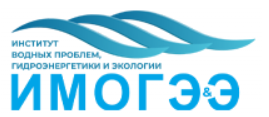 The Institute of Water Problems, Hydropower and Ecology of the National Academy of Sciences of Tajikistan was founded in 2002 . It carries out diverse research, including comparative analysis of energy efficiency of large rivers in Tajikistan, development of a unified economic criterion of hydropower development; development of methods for regulation and forecasting of flow for hydropower and irrigation purposes, assessment of economic value of water under joint use for hydropower and irrigation; optimization of hydropower operation and planning of hydraulic facilities in river basins of Tajikistan; studies of climate impact on water and energy resources and development of methods for hydropower adaptation; analysis of international and national legislation on transboundary water and energy sharing, causes of hydropower and irrigation conflicts between the Aral Sea Basin countries and development of proposals for their solution.
The Institute of Water Problems, Hydropower and Ecology of the National Academy of Sciences of Tajikistan was founded in 2002 . It carries out diverse research, including comparative analysis of energy efficiency of large rivers in Tajikistan, development of a unified economic criterion of hydropower development; development of methods for regulation and forecasting of flow for hydropower and irrigation purposes, assessment of economic value of water under joint use for hydropower and irrigation; optimization of hydropower operation and planning of hydraulic facilities in river basins of Tajikistan; studies of climate impact on water and energy resources and development of methods for hydropower adaptation; analysis of international and national legislation on transboundary water and energy sharing, causes of hydropower and irrigation conflicts between the Aral Sea Basin countries and development of proposals for their solution.
The Institute offers: (1) master’s programs on “Hydraulic engineering”, “Ecology”, “Natural water and wastewater treatment”, “Environmental monitoring”, “Rational use and protection of water resources”, “Energy efficient technologies and energy management” since 2014; (2) PhD programs on “Ecology”, “Hydrology”, “Meteorology”, “Hydraulic engineering and facilities”, “Water resources and water use”, “Construction” since 2017.
Research. In 2022, research efforts were continued on: (1) “Optimization of water-food-energy-environment nexus in the Zeravshan River basin in the context of climate change” (2018-2022); (2) “Problems of formation and regulation of solid runoff in waters of Tajikistan and their solution” (2020-2024); (3) “Energy development and optimization strategy. Hydro-coal scenario of energy sector development in Tajikistan” (2020-2024).
Project proposals were developed on “Study of water quality and ecology of the Varzob and Kafirnigan Rivers and their tributaries”, “Study of physical and chemical composition of ash and slag waste and development of recommendations for its ecological utilization”, “Study of climate change impact on the Vakhsh River water regime using ground observations and RS data”, and “Study of spatial and temporal dynamics of glaciers and lakes of Tajikistan depending on impact factors”.
Events. The Institute hosted : (1) scientific and practical conference “Water sector: problems and solutions”, jointly with the Agency for Hydrometeorology and the Aga Khan Agency for Habitat (May 6-7); (2) International scientific and practical conference “Water security as a basis for sustainable development” dedicated to the 20th anniversary of the Institute (October 5-6).

The Institute took part in the: (1) International Central Asian scientific and practical conference “30-years of water cooperation among the Central Asian states: facing the future” (April 25-27, Turkistan, Kazakhstan); (2) international exhibition “Water for sustainable development” coincided with the 2nd International High-level Conference on the International Decade for Action “Water for Sustainable Development”, 2018-2028 (June 6-9).

Publications. Since 2021, the Institute has been publishing the Journal “Water Resources, Power Engineering, and Ecology” registered at the Tajik Ministry of Culture (No.191-MJ-97). In 2022, 4 issues were published.
Other publications: O. Amirzoda, N. Kurbon. Tajikistan initiatives on water and SDGs. - Dushanbe: Donish, 2022. - 79 pp.; O. Amirzoda, N. Kurbon, Kh. Asoev. Leader of the Nation: water, climate and environment. - Dushanbe: Donish, 2022. – 134 pp.; I.M.Rakhimov, Sh.K. Obidzhoni, O. Kh. Amirzoda, S.K. Davlatshoev. Training manual “Study and interpretation of data on saline groundwater in piezometric wells using temperature and conductometer measurements”. – Dushanbe, 2022.

For publications of the Institute in national and independent information agencies of Tajikistan, see.
Source: Institute of Water Problems, Hydropower and Ecology of the National Academy of Sciences of Tajikistan
Uzbekistan. Research Institute of Irrigation and Water Problems (RIIWP)
RIIWP is a major research institution in the area of water management and land reclamation in Uzbekistan. One of the main areas of Institutes activity is the research and development on water resources and their use. The Institute includes 15 research laboratories, 5 regional centers (Karakalpakstan, Bukhara, Namangan, Samarkand and Surkhandarya), Water Engineering Center, and Research Consulting Center for Water Saving Technologies. The Institute employs 14 doctors of science, 42 doctors of philosophy and candidates of science; 86 doctoral students and 20 independent researchers are engaged in the Institute’s research work as well.
Activities in 2022
Research. According to the results of 2022, the Institute took the 8th place among 105 national research organizations in the national rating of the Ministry of Innovations of the Republic of Uzbekistan.
RIIWP works on 12 topics through grant projects of the Ministry of Innovations of RUz: (1) “Development of ‘field-irrigation-irrigation system’ technology – a smart technology for irrigated areas in Syrdarya province suffered from disaster” (innovative research); (2) “Scientific basis, principles and new methodology for land reclamation in Uzbekistan”, “Flow regulation and streamflow process patterns in river basins under anthropogenic impact” (fundamental research); (3) “Development of technology serving to reduce CDW in Khorezm province”, “Development of hydro-adaptation technology for hydraulic structures with direct intake”, “Development of water-saving technology for rice production under soil-climatic conditions of the Republic of Karakalpakstan and Khorezm province”, “Development of resource-saving technology for optimal cotton irrigation”, “Development of water-saving technology for irrigation and leaching and creation of a polygon providing favorable regime of irrigated land in the Republic of Karakalpakstan”, “Development of technology increasing energy efficiency of pump stations”, “Development of GIS-based model for reservoir operation and siltation management”, “Development of a long-term streamflow forecast model for the Surkhandarya and Kashkadarya basins in the context of climate change”, “Development of water regime of lakes and reservoirs in Muynak district to improve their hydrological and hydrobiological status” (applied research).
RIIWP implemented the Project “Conducting a comprehensive biochemical analysis of silt composition of the in-stream reservoir at the Tyuyamuyun hydroscheme”, including the bathymetric (hydrographic) survey and calculation of reservoir siltation.
Capacity building. RIIWP held training: (1) for the staff of the specialized water service; (2) in all provinces of Uzbekistan and the Republic of Karakalpakstan in line with the PP RUz No.PP-145 of 01.03.2022; (3) on laser leveling and application of “Biosolvent” product for soil leaching and “Hydrogel” product to preserve moisture in the soil in case of water shortage in the Republic of Karakalpakstan.
24 young researchers upgraded their skills in prestigious world research institutions. 7 demonstration sites were established to introduce scientific achievements and know-how in the water sector.
Events. RIIWP representatives participated and made presentations at more than 15 international conferences.
Cooperation. 9 Memorandums of Understanding were signed with research and leading universities of China, Great Britain, Belarus, Russia, Hungary, South Korea, Japan and CA countries on personnel training, transfer of scientific achievements and know-how.
Publications. 14 monographs, 36 recommendations and manuals were published and more than 350 articles were included in Web of Science and Scopus databases. Nine patents were registered.
Other publications: (1) I.Makhmudov, D.Paluanov, U.Sadiev. Technical solutions to ensure the safety of operating hydraulic engineering constructions. ASEAN Journal on Science & Technology for Development. Vol. 39, No 4, 2022, 189-191 189 DOI 10.5281/zenodo.6583860; (2) I.Makhmudov, U.Sadiev. Mathematical model of mass transfer of reinforced concrete structures of hydraulic structures with corrosion protection in aggressive environment. Journal of Positive School Psychology http://journalppw.com 2022, Scopus, EBSCO/ Vol. 6, No. 6, 5889-5892 // https://journalppw.com/index.php/jpsp/article/view/8494; (3) I.Makhmudov, U.Sadiev, U.Jovliev. Transporting irrigation systems and problems of their tightness. Journal of Positive School Psychology http://journalppw.com 2022, Scopus, EBSCO/ Vol. 6, No. 6, 5879-5883 // https://journalppw.com/index.php; (4) Yu.Shirokova, G.Paluashova, F.Sadiev, J.Amers and D.Kodirov. Desalinization of degraded soils by atmospheric precipitation and Biosolvent for saving water resources. // IOP Conference Series: Earth and Environmental Science DOI 10.1088/1755-1315/1112/1/012130.
Source: RIIWP
Ukraine. Institute of Water Problems and Land Reclamation (IWPLR)
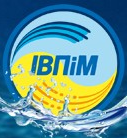 The IWPLR of NAAS was founded in 1929. The Institute carries out fundamental and applied research in the area of hydraulic engineering, irrigation and drainage, water management, agricultural water supply, land reclamation and environmental monitoring. It deals also with the design of water facilities and water supply and sanitation systems. The Institute offers postgraduate and doctoral programs on: 06.01.02 – “Agricultural land reclamation” (technical, agricultural sciences); 201 – “Agronomy” and 192 – “Construction and civil engineering”. In 2022, the Academic Council was established at the Institute for awarding degree of Doctor of Science.
The IWPLR of NAAS was founded in 1929. The Institute carries out fundamental and applied research in the area of hydraulic engineering, irrigation and drainage, water management, agricultural water supply, land reclamation and environmental monitoring. It deals also with the design of water facilities and water supply and sanitation systems. The Institute offers postgraduate and doctoral programs on: 06.01.02 – “Agricultural land reclamation” (technical, agricultural sciences); 201 – “Agronomy” and 192 – “Construction and civil engineering”. In 2022, the Academic Council was established at the Institute for awarding degree of Doctor of Science.
Activities in 2022
Research. Scientists of the Institute are working on : (1) “Study of formation of water and nutritive regimes under combination of different irrigation and tillage methods on reclaimed land in a changing climate” (2021-2025, 04.02.00.11F); (2) “Study of formation processes and development of scientific and methodological bases of soil water regime management on reclaimed land in current farming practices and climate change” (2022-2025, 04.02.00.25F).
The IWPLR and the State Agency of Water Resources of Ukraine signed a Memorandum of Cooperation defining the procedure of cooperation between institutions on scientific support in the field of management, use and reproduction of surface water resources.
Capacity building. The Institute conducted advanced training courses for research and academic-pedagogical staff on “Modern technologies and techniques in irrigation” (June 8-9, online).
IWPLR took part in: (1) online webinars “New approaches for climate change assessment” (January 21) and “International experience of integrated land and water resource consolidation: organization, procedures, implementation – opportunities for Ukraine” (May 18-June 1); (2) training (November 21-25, Schwarzenburg, Switzerland).
Events. The Institute organized the 5th International scientific and practical conference of young scientists “Role of land reclamation and water management in sustainable agriculture development” (December 8).
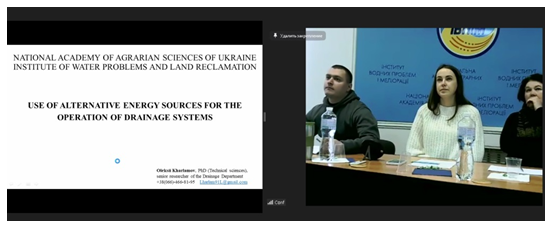
Scientists of the Institute delivered speeches at the: (1) meeting of the Working Group on Irrigation and Drainage in States with Transition Economy (26 May, online); (2) International scientific and practical conference “Integrated quality assurance of technological processes and systems” (May 26-27, online); (3) Scientific Assembly of the International Association of Hydrological Sciences (May 28-June 3, Montpellier, France); (4) 4th International AGBIOL Conference 2022 (August 29, online); (5) Balkan Congress (August 21-September 3, Edirne, Turkey); (6) International conference “Growing crops using sewage sludge on marginal lands” (September 22, online); (7) conference “Efficient land use in the Polesie Zone in a changing climate” (September 22, online); (8) meeting “Land reform in Ukraine: prospects and challenges for sustainable development of agrarian sector and rural areas” (December 1).
Publications. Publications in 2022: Multiyear changes in water regime of Ukrainian rivers/ V.I.Vishnevskiy, A.V.Kutsiy. – Kiev: Nakova dumka, 2022. – 252 pp.
Water regime management while growing fodder crops on drained land/ G.V.Topolnik, S.M.Kika, I.M.Vodka, M.G.Sgetsyuk, M.D.Zosymchuk, A.A.Zosymchuk, A.A.Danilitsky, under the editorship of Candidate of technical sciences G.V.Voropay. - Kiev: Agriscience, 2022. 244 pp. ISO 978-966-540-561-0
Modernization of irrigation systems using self-regulated water supply/ V.M.Popov, T.V.Matyash, M.M.Targoniy, M.V.Yatsyuk, A.P.Muzyka, N.V.Soroka, V.V.Shlikhta. Kiev: Agriscience, 2022. 128 pp. ISBN 978-966-540-544-3-540-544-3
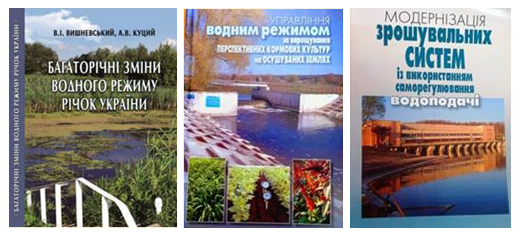
Source: IWPLR of NAAS
10.4. International Research Institutes Working on Water Issues in Central Asia
International Institute for Central Asia
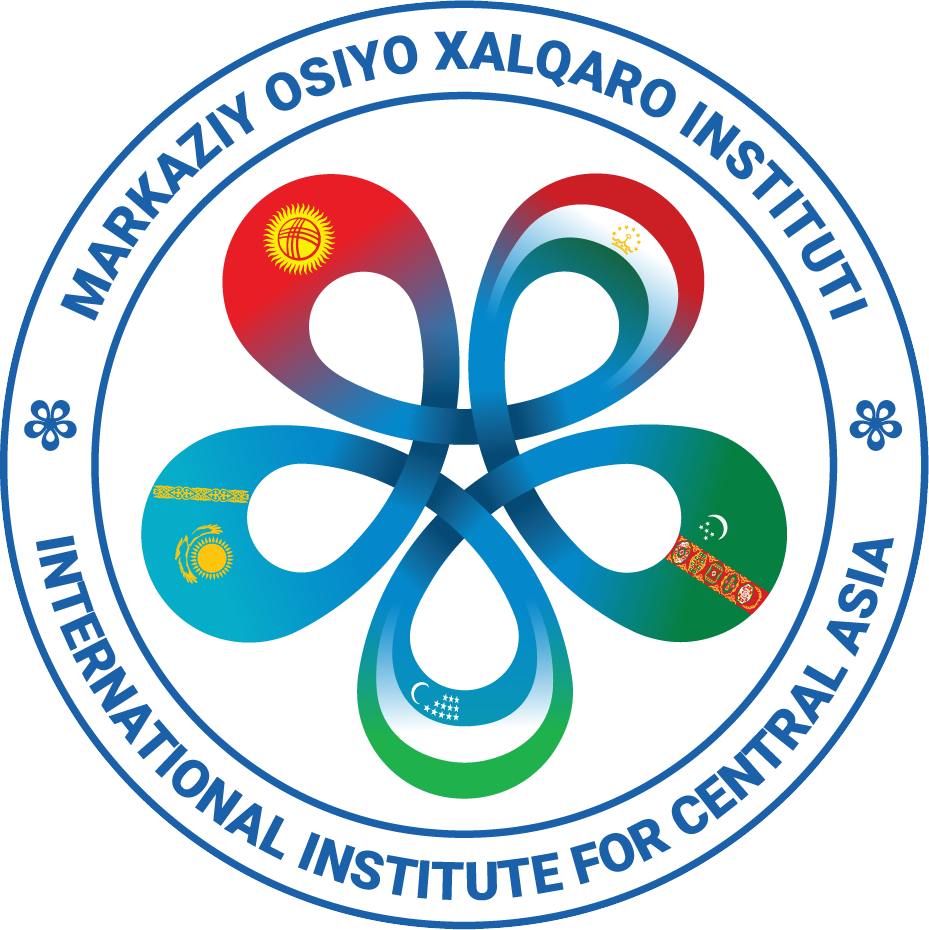 The International Institute for Central Asia (IICA), established on the initiative of the President of Uzbekistan in 2020, is the only public research institution in the region engaged in interdisciplinary research on civilizational diversity and modern processes of broad development in Central Asia.
The International Institute for Central Asia (IICA), established on the initiative of the President of Uzbekistan in 2020, is the only public research institution in the region engaged in interdisciplinary research on civilizational diversity and modern processes of broad development in Central Asia.
IICA is formed to promote the establishment and strengthening of close research and expert cooperation in the common interests of the countries in the region. IICA closely cooperates with representatives of the public and private sectors, civil society, distinguished scientists and experts of Uzbekistan to ensure open-mindedness and impartiality.
The Institute aims to establish broad links with advanced think tanks of the CA countries and other states, as well as experts of international organizations dealing with Central Asian issues.
The Institute employs experts with experience in analytical work in the following areas relevant for the Central Asian region: economics, energy, ecology, and cultural and humanitarian studies.
Main fields of activities
• comprehensive and in-depth studies of main trends in modern foreign policy, domestic political and socio-economic processes in the countries of the Central Asian region;
• analysis of political, legal, trade, economic, humanitarian and other aspects of cooperation between the countries in Central Asia, as well as the status of and prospects for joint solution of common challenges facing the states, incl. in the areas of trade and investment, industrial cooperation, transport and transit, agriculture, tourism, science and culture, water and energy, environmental protection, as well as security;
• contribution to policy documents to deepen the multifaceted cooperation of the Republic of Uzbekistan with other countries in the region;
• elaboration of proposals and recommendations on new growth areas of regional development;
• exploration of prospects for extension of investment and innovation cooperation, adoption of green technologies, and development of digital economy;
• study of the historical and cultural heritage of Central Asia and the ways for its preservation.
Activities in 2022
IICA organized and participated in 27 international conferences, 49 roundtables, forums and online seminars held jointly with international partners (India, Kazakhstan, China, Pakistan, Russia, Turkey, Tajikistan, Turkmenistan, France, etc.). 27 meetings and negotiations were held with the heads of diplomatic missions of foreign countries (Israel, Kazakhstan, Korea, Kyrgyzstan, Latvia, Russia, Tajikistan, Turkey, France) and representative offices of international organizations (UN, UNRCCA, TIKA, SETA, JETRO, JIIA, Ebert Foundation, Japan Peace Foundation, etc.).
12 events were focused on water and environment: (1) roundtables “Topical issues of rational water use and glacier conservation in Central Asia” (January 19, Tashkent, IICA jointly with NAS RT) and “On prospects for effective use of water diplomacy mechanisms in the Central Asian region” (November 11, Tashkent); (2) International Central Asian scientific and practical conference “30-years of water cooperation among the Central Asian states: facing the future” (April 25-27, Turkestan, Kazakhstan); (3) Conference “Uzbek-Tajik water cooperation” (April 29, online, IICA in cooperation with the Center for Strategic Studies under the President of Tajikistan); (4) under the “USAID regional water and environment activity”- 2nd and 3rd meetings of the Regional Coordination Committee (May 11-14, Bukhara, Uzbekistan; September 26-29, Kyzylorda, Kazakhstan), 3rd meeting of the National Intersectoral Committee (September 7-9, Namangan, Uzbekistan) and a workshop on the use of WEAP (Water Evaluation and Planning) and LEAP (Long-range Energy Alternatives Planning) (December 5, Tashkent); (5) within the Dushanbe Water Process (June 6-10, Dushanbe, Tajikistan); (6) meeting with Prof. T. Dadabaev of the University of Tsukuba (Japan) (August 18, Tashkent, IICA); (7) regional seminar “Central Asia towards the UN 2023 Water Conference” (September 20, Tashkent); (8) International conference “Global climate change” with the Ebert Foundation and ISRS (November 17, online).
Source: IICA